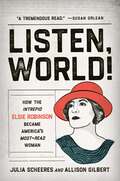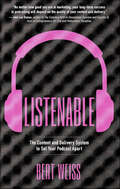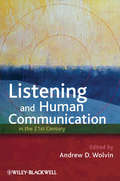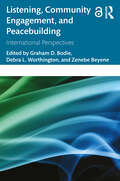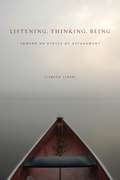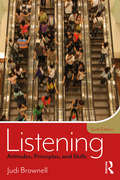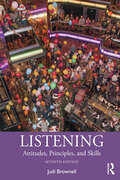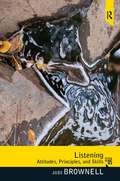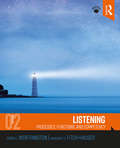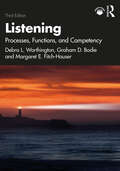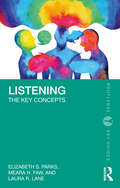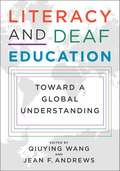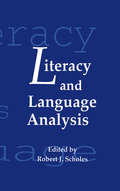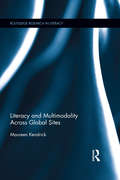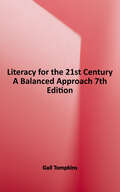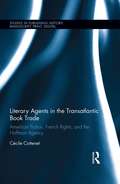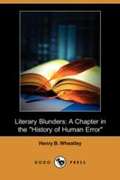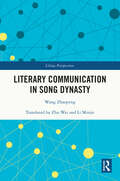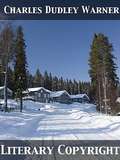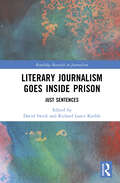- Table View
- List View
Listen, World!: How the Intrepid Elsie Robinson Became America's Most-Read Woman
by Julia Scheeres Allison Gilbert*Winner of the 2023 Northern California Book Award* The first biography of Elsie Robinson, the most influential newspaper columnist you&’ve never heard of At thirty-five, Elsie Robinson feared she&’d lost it all. Reeling from a scandalous divorce in 1917, she had no means to support herself and her chronically ill son. She dreamed of becoming a writer and was willing to sacrifice everything for this goal, even swinging a pickax in a gold mine to pay the bills. When the mine shut down, she moved to the Bay Area. Armed with moxie and samples of her work, she barged into the offices of the Oakland Tribune and was hired on the spot. She went on to become a nationally syndicated columnist and household name whose column ran for over thirty years and garnered more than twenty million readers. Told in cinematic detail by bestselling author Julia Scheeres and award-winning journalist Allison Gilbert, Listen, World! is the inspiring story of a timeless maverick, capturing what it means to take a gamble on self-fulfillment and find freedom along the way.
Listenable: The Content and Delivery System to Set Your Podcast Apart
by Bert WeissThere is great news and bad news when it comes to podcasting.The great news? Anybody can start a podcast. The bad news? Anybody can start a podcast. And it seems as if everyone is starting a podcast.A simple Google search reveals countless guides about how to start a podcast. From equipment to software, someone can go live with a new podcast in a matter of days with simple step-by-step instructions about recording and launching their show.But what’s lacking is simple and effective training on how to create a podcast that’s actually listenable—that makes listeners hit that subscribe button. In Listenable, syndicated morning-drive radio host, Bert Weiss, shares a simple content and delivery strategy anyone can use to produce a show that builds a large, loyal audience.
Listening and Human Communication in the 21st Century
by Andrew D. WolvinBringing together top listening scholars from a range of disciplines and real world perspectives, Listening and Human Communication in the 21st Century offers a state-of-the-art overview of what we know and think about listening behavior in the 21st century. Introduces students to the core issues listening theory and practiceIncludes student friendly features such as editorial introductions to each section and questions for further reflection at the end of each chapterDiscussion ranges from historical perspectives to present theory, to teaching and performing listening in the classroom, in health care, and in corporate settings
Listening, Community Engagement, and Peacebuilding: International Perspectives
by Debra L. Worthington Zenebe BeyeneThis book explores the role of listening in community engagement and peacebuilding efforts, bridging academic research in communication and practical applications for individual and social change.For all their differences, community engagement and peacebuilding efforts share much in common: the need to establish and agree on achievable and measurable goals, the importance of trust, and the need for conflict management, to name but a few. This book presents listening – considered as a multi-disciplinary concept related to but distinct from civility, civic participation, and other social processes – as a primary mechanism for accomplishing these tasks. Individual chapters explore these themes in an array of international contexts, examining topics such as conflict resolution, restorative justice, environmental justice, migrants and refugees, and trauma-informed peacebuilding. The book includes contemporary literature reviews and theoretical insights covering the role of listening as related to individual, social, and governmental efforts to better engage communities and build, maintain, or establish peace in an increasingly divided world.This collection provides invaluable insight to researchers, students, educators, and practitioners in intercultural and international communication, conflict management, peacebuilding, community engagement, and international studies.Chapter 10 of this book is freely available as a downloadable Open Access PDF at http://www.taylorfrancis.com under a Creative Commons Attribution-Non Commercial-No Derivatives (CC-BY-ND) 4.0 license.
Listening, Thinking, Being: Toward an Ethics of Attunement
by Lisbeth LipariAlthough listening is central to human interaction, its importance is often ignored. In the rush to speak and be heard, it is easy to neglect listening and disregard its significance as a way of being with others and the world. Drawing upon insights from phenomenology, linguistics, philosophy of communication, and ethics, Listening, Thinking, Being is both an invitation and an intervention meant to turn much of what readers know, or think they know, about language, communication, and listening inside out. It is not about how to be a good listener or the numerous pitfalls that stem from the failure to listen. Rather, the purpose of the book is, first, to make readers aware of the value and importance of listening as a fundamental human ability inextricably connected with language and thought; second, to alert readers to the complexity of listening from personal, cultural, and philosophical perspectives; and third, to offer readers a way to think of listening as a mode of communicative action by which humans create and abide in the world. Lisbeth Lipari brings together historical, literary, intercultural, scientific, musical, and philosophical perspectives, as well as a range of her own personal experiences, to produce this highly readable analysis of how “the human experience of being as an ethical relation with others . . . is enacted by means of listening.”
Listening, Thinking, Being: Toward an Ethics of Attunement
by Lisbeth LipariAlthough listening is central to human interaction, its importance is often ignored. In the rush to speak and be heard, it is easy to neglect listening and disregard its significance as a way of being with others and the world. Drawing upon insights from phenomenology, linguistics, philosophy of communication, and ethics, Listening, Thinking, Being is both an invitation and an intervention meant to turn much of what readers know, or think they know, about language, communication, and listening inside out. It is not about how to be a good listener or the numerous pitfalls that stem from the failure to listen. Rather, the purpose of the book is, first, to make readers aware of the value and importance of listening as a fundamental human ability inextricably connected with language and thought; second, to alert readers to the complexity of listening from personal, cultural, and philosophical perspectives; and third, to offer readers a way to think of listening as a mode of communicative action by which humans create and abide in the world. Lisbeth Lipari brings together historical, literary, intercultural, scientific, musical, and philosophical perspectives, as well as a range of her own personal experiences, to produce this highly readable analysis of how “the human experience of being as an ethical relation with others . . . is enacted by means of listening.”
Listening: Attitudes, Principles, and Skills
by Judi BrownellListening, Sixth Edition takes an experiential approach to listening instruction, providing extensive applied examples and cases within the context of the HURIER listening model. The text encourages students to view listening as a process involving six interrelated components, which are developed along the parallel dimensions of theory and skill building. This new edition offers a companion website as well as additional and updated cases, in-text exercises, and questions for discussion. Throughout the text, new content has been added to address students’ world of evolving technology and expanding social boundaries. Included in the new edition: The complexities of listening to social media and the unique challenges presented by mediated communication New and expanded topics in Listening Challenges, including listening as it relates to career communication and business contexts Suggested techniques for encouraging others to listen The new requirements of listening across cultural and generational boundaries, emphasized throughout Opening cases that present timely issues related to the listeners’ social responsibilities A personal journal assignment in each chapter
Listening: Attitudes, Principles, and Skills
by Judi BrownellThis fully updated seventh edition takes an experiential approach to listening instruction, providing extensive applied examples and cases within the context of the HURIER listening model. This textbook encourages students to view listening as a process involving six interrelated components which are developed along the parallel dimensions of theory and skill building. This new edition includes additional and updated cases, exercises, and questions for discussion to address students’ world of evolving technology, expanding social boundaries, and global communication challenges. A new challenge, integrative listening, addresses students’ social responsibility as effective listeners and suggests that they apply their skills to create strong listening environments characterized by respectful and inclusive dialogue. Students move from self-reflection and self-knowledge through skill development and personal applications to creating listening environments that facilitate productive conversation and collaboration. Cases in “the bigger picture” address issues such as the opioid crisis, fake news, artificial intelligence, and teenagers’ mental health. Listening serves as a core textbook for courses in listening, communication studies, communication skills, interpersonal communication, management, human resources, and education.
Listening: Attitudes, Principles, and Skills
by Judi BrownellProvides an applied, experiential approach to listening instruction with special attention to interpersonal, family, professional, educational, and health contexts Market leading text for Listening courses in Communication, with additional application for management, education, and human resources courses Text contains practical features including case studies, exercises, discussion questions, and journal assignments --Online resources include PowerPoint slides and exercises
Listening: Attitudes, Principles, and Skills (Subscription)
by Judi BrownellListening takes an experiential approach to listening instruction, providing extensive applications and cases within the context of a sound theoretical framework. The text encourages students to view listening as a process involving six interrelated components which are developed along the parallel dimensions of theory and skill building. Within the unifying theoretical framework of the HURIER model, students develop an understanding of the listening process and gain powerful listening skills. The fifth edition continues to explore the impact of culture, technology, and globalization, and raises timely ethical questions to promote students’ consideration of the responsibilities associated with listening in today’s complex world. Self-assessment, activities, and case studies further distinguish this engaging text. Students will readily recognize the important role listening plays in helping them achieve their personal and professional goals while they become more engaged and informed citizens.
Listening: Processes, Functions and Competency
by Debra Worthington Margaret Fitch-HauserListening explores the process and role of listening in human communication as a cognitive process, as a social function, and as a critical professional competency. While introducing students the theory and research of listening scholarship, Worthington and Fitch-Hauser also help students to build practical skills and achieve the desired outcomes of effective listening.
Listening: Processes, Functions, and Competency
by Debra L. Worthington Margaret E. Fitch-HauserListening: Processes, Functions, and Competency, Second Edition explores the role of listening as an essential element in human communication. The book addresses listening as a cognitive process, as a social function, and as a critical professional competency. Blending theory with practical application, Listening builds knowledge, insight, and skill to help the reader achieve the desired outcome of effective listening. This second edition introduces listening as a goal-directed activity and has been expanded to include a new chapter addressing listening in mediated contexts. Theory and research throughout the text have been updated, and the final chapter covers new research methodologies and contexts, including fMRI, aural architecture, and music.
Listening: Processes, Functions, and Competency
by Debra L. Worthington Margaret E. Fitch-Hauser Graham D. BodieThis fully revised third edition explores the essential role of listening to human communication across contexts and cultures.Based on the premise that listening is a goal-directed activity, this book blends theory with practical application and builds knowledge, insight, and skills to help the reader become a more effective listener. In this new edition, theory and research has been updated with an emphasis on how the growing reliance on mediated communication affects how individuals communicate in their personal, professional, and educational lives. It introduces students to emerging concepts and methods such as neurodiversity and fMRI as well as evolving professional and educational contexts including aural architecture and "the musical brain".Addressing listening as a cognitive process, social function, and critical professional competency, this is an essential textbook for undergraduate courses in listening and communication studies.In addition to a fully updated instructor’s manual containing discussion questions, activities and assignments, and exam questions, this new edition includes PowerPoint slides and videos. They are available at http://www.routledge.com/9781032491257.
Listening: The Key Concepts (Routledge Key Guides)
by Elizabeth S. Parks Meara H. Faw Laura R. LaneA vital and comprehensive starting place for understanding the key concepts, this book explores 177 diverse types and styles of listening named in academic scholarship to date. This book is an encyclopaedic-style synthesis of existing literature related to listening styles and types. Through online academic resource curation and literature review synthesis, this key reference work offers a deep dive into the interdisciplinary foundations of listening. By providing a brief descriptive overview of each of the identified listening styles and types as well as the inclusion of key scholars related to them, this book challenges assumptions about “listening” as a singular communicative activity and offers students and scholars alike a place from which to draw key listening concepts. No other text has attempted to bring together previous listening scholarship in this expansive interdisciplinary way. This book promotes both the field of listening itself while also expanding opportunities for students of many disciplines to embed listening scholarship in their knowledge and practical application. The first of its kind, Listening: The Key Concepts is an expansive, state-of the-field exploration of listening scholarship that can be used as a guidebook for undergraduate and graduate students in Listening, Public Speaking, Interpersonal Communication, and Intercultural Communication courses as well as other related disciplines.
Literacy and Deaf Education: Toward a Global Understanding
by Jean Andrews Qiuying WangInternational perspectives about literacy and deaf students is an uncharted intellectual landscape. Much of the literacy research in deaf education is conducted in English-speaking countries—primarily the United States—but 90% of deaf children live outside the U.S. and learn various signed and spoken languages, as well as diverse writing systems. Many of these children face significant educational challenges. In order to improve the literacy outcomes of deaf students around the world, it is imperative to study how children are using their local signed and spoken languages along with Deaf culture to learn to read and write. This volume fills a void in the field by providing a global view of recent theoretical and applied research on literacy education for deaf learners. Literacy and Deaf Education: Toward a Global Understanding is organized by region and country, with the first part discussing writing systems that use alphabetic scripts, and the second part focusing on countries that use non-alphabetic scripts. Some examples of the wide spectrum of topics covered include communication methodologies, curriculum, bilingual education, reading interventions, script diversity, and sociocultural development, including Deaf cultural developments. The contributors provide the results from literacy projects in fifteen countries and regions. This volume aims to widen the knowledge base, familiarize others in the field with these initiatives, and improve global understandings and outcomes of literacy teaching and learning in deaf education from birth to high school. Signed chapter summaries are available on the Gallaudet University Press YouTube channel.
Literacy and Language Analysis
by Robert J. ScholesThis volume investigates the interconnections between language and literacy in terms of the structures of language as well as the linguistic contexts of literacy. The work for this book was generated in order to focus on studies of the acquisition and impact of literacy on traditional assertions of linguistic analysts. The contributors show that claims regarding descriptions of the linguistic competence of native speakers contain phonemic, morphemic, and sentential constructs applicable only to literate language users. They also suggest that syntactic formalities -- elements lacking extensional reference -- are unlikely in the absence of literacy, and that the notions of "sentencehood" and syntactic well-formedness are functions of literacy. Finally, the book reviews the basic notions of literary relativity and the role of literacy in communication and civilization.
Literacy and Multimodality Across Global Sites (Routledge Research in Literacy #9)
by Maureen KendrickOver the past three decades, our conceptualizations of literacy and what it means to be literate have expanded to include recognition that there is a qualitative difference in how we communicate through modalities such as the visual, audio, spatial, and linguistic and that different modes are combined in complex ways to make meaning. The field of multimodality is concerned with how human beings use different modes of communication to represent or make meaning in the world. Despite the rapid growth of international research in this area, accounts of a broader range of global sites, particularly economically under-resourced and culturally diverse contexts such as Sub-Saharan Africa, remain under-researched and under-represented in the literature. This book contextualizes a range of literacies including health literacies, community literacies, family literacies, and multilingual literacies within broader modes of communication, most specifically play and the visual. The claim is that powerful pedagogies, methodologies and theories can be constructed by taking a more detailed look at multimodal meaning-making in diverse contexts. By describing and analyzing multimodal practices and texts across a diverse range of contexts, the book highlights different constructs, issues and emerging questions dealing with the study of literacies and multimodality.
Literacy for the 21st Century: A Balanced Approach, Seventh Edition
by Gail TompkinsTeaching literacy with a balance of theory and applications. Integrating the best of what we currently know about teaching reading and writing, as well as ideas that will lead us into the future, Literacy for the 21st Century: A Balanced Approach provides the balance of pedagogy and application that teachers need to be successful in the classroom. It covers the fundamental components of literacy, illustrates how to teach skills and strategies, identifies how to differentiate instruction to meet the diverse needs of students today, and supports digital teaching and learning. An emphasis is placed on preparing readers to become teachers who will ensure their students meet grade-level standards. The Seventh Edition provides the theoretical background and most contemporary and practical approaches for literacy instruction–everything readers need to create a classroom climate that allows all students to flourish.
Literary Agents in the Transatlantic Book Trade: American Fiction, French Rights, and the Hoffman Agency (Studies in Publishing History: Manuscript, Print, Digital)
by Cécile CottenetBy way of a case study of one of the oldest French book agencies, Agence Hoffman, this book analyzes the role played by French literary agents in the importation of US fiction and literature into France in the years following World War II. It sheds light on the material conditions of the circulation of texts across the Atlantic between 1944 and 1955, exploring the fine mechanisms of agents’ negotiations which allowed texts, and ideas, to cross borders. While providing comparative insights into the history of publishing in France and in the United States in the immediate aftermath of the war, this book aims at foregrounding the role of the book agent, an all-too often neglected intermediary in the field of book history. Grounded in archival work conducted both in France and the United States, this study is based on previously unexamined correspondence. Considering the concept of mediation as central in the field of print culture, this book addresses the dearth of scholarship on literary agents on both sides of the Atlantic, and intersects with the current scholarship on transatlantic, internationalm and transnational cultural and trade networks, as evidenced by the recently emerged field of sociology of translation in Europe.
Literary Blunders: A Chapter in the "History of Human Error"
by Henry B. WheatleyLinguist Wheatley discusses typographical errors, "Irish bulls," deliberate and accidental misquotations, poor translations from other languages into English and vice versa, and errors of fact in student papers and examinations.
Literary Communication in Song Dynasty (ISSN)
by Wang ZhaopengBased on first-hand historical materials, this book explores the various aspects of literary communication during the Song Dynasty in China.The book investigates the single-channel dissemination of poetry and ci works, the dissemination of literary collections, the dissemination through wall inscriptions, the oral dissemination of Song ci, the remuneration and commercialization of literature in the Song Dynasty, the paths to fame for Song writers, the non-literary factors in the dissemination of literature and the dissemination of literary works through paintings and songs. The author provides insights into the six major questions in the study of literary communication: Who disseminates, where, how, what, to whom and the effects of dissemination. The author also seeks to provide detailed answers to the following questions. What was the role of female singers in both domestic and official entertainment? What were the costs and prices of the books? Who paid the authors? What methods did writers use to gain fame and social recognition?This work will be essential reading for scholars and students of Chinese studies, communication studies and media and cultural studies.
Literary Copyright
by Charles Dudley WarnerThis is the first public meeting of the National Institute of Arts and Letters. The original members were selected by an invitation from the American Social Science Association, which acted under the power of its charter from the Congress of the United States. The members thus selected, who joined the Social Science Association, were given the alternative of organizing as an independent institute or as a branch of the Social Science Association.
Literary Coteries and the Making of Modern Print Culture
by Betty A. SchellenbergLiterary Coteries and the Making of Modern Print Culture offers the first study of manuscript-producing coteries as an integral element of eighteenth-century Britain's literary culture. As a corrective to literary histories assuming that the dominance of print meant the demise of a vital scribal culture, the book profiles four interrelated and influential coteries, focusing on each group's deployment of traditional scribal practices, on key individuals who served as bridges between networks, and on the aesthetic and cultural work performed by the group. The book also explores points of intersection between coteries and the print trade, whether in the form of individuals who straddled the two cultures; publishing events in which the two media regimes collaborated or came into conflict; literary conventions adapted from manuscript practice to serve the ends of print; or simply poetry hand-copied from magazines. Together, these instances demonstrate how scribal modes shaped modern literary production. This title is also available as Open Access.
Literary Folios and Ideas of the Book in Early Modern England
by Francis X. ConnorThis monograph makes clear how the format of the literary folio played a fundamental role in book history by encapsulating the unstable negotiation between commerce, cultural prestige, and the fundamental nature of the printed book.
Literary Journalism Goes Inside Prison: Just Sentences (Routledge Research in Journalism)
by Richard Lance Keeble David SwickLiterary Journalism Goes Inside Prison: Just Sentences opens up a new exploration of literary journalism – immersive, long-form journalism so beautifully written that it can stand as literature – in the first anthology to examine literary journalism and prison. In this book, a wide range of compelling subjects are considered. These include Nelson Mandela and other prisoners of apartheid; the made-in-prison podcast Ear Hustle; women’s experiences of life behind bars; Behrouz Boochani’s 2018 bestseller No Friend but the Mountains; George Orwell’s artful writing on incarceration; Pete Earley’s immersion into the largest prison in the United States, The Hot House; Arthur Koestler and the Spanish Civil War; Ted Conover’s year as a prison guard in Newjack: Guarding Sing Sing and (most originally) Bruce Springsteen’s execution narrative Nebraska. This volume will benefit anyone who writes, studies or teaches any form of narrative nonfiction. Eleven international scholars articulate what makes the work they are analysing so exceptional. At the same time, they offer insights on a diverse range of vital topics. These include journalism ethics, journalism and trauma, media history, cultural studies, criminology and social justice.
